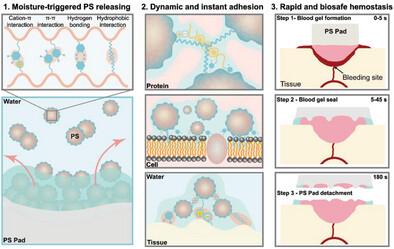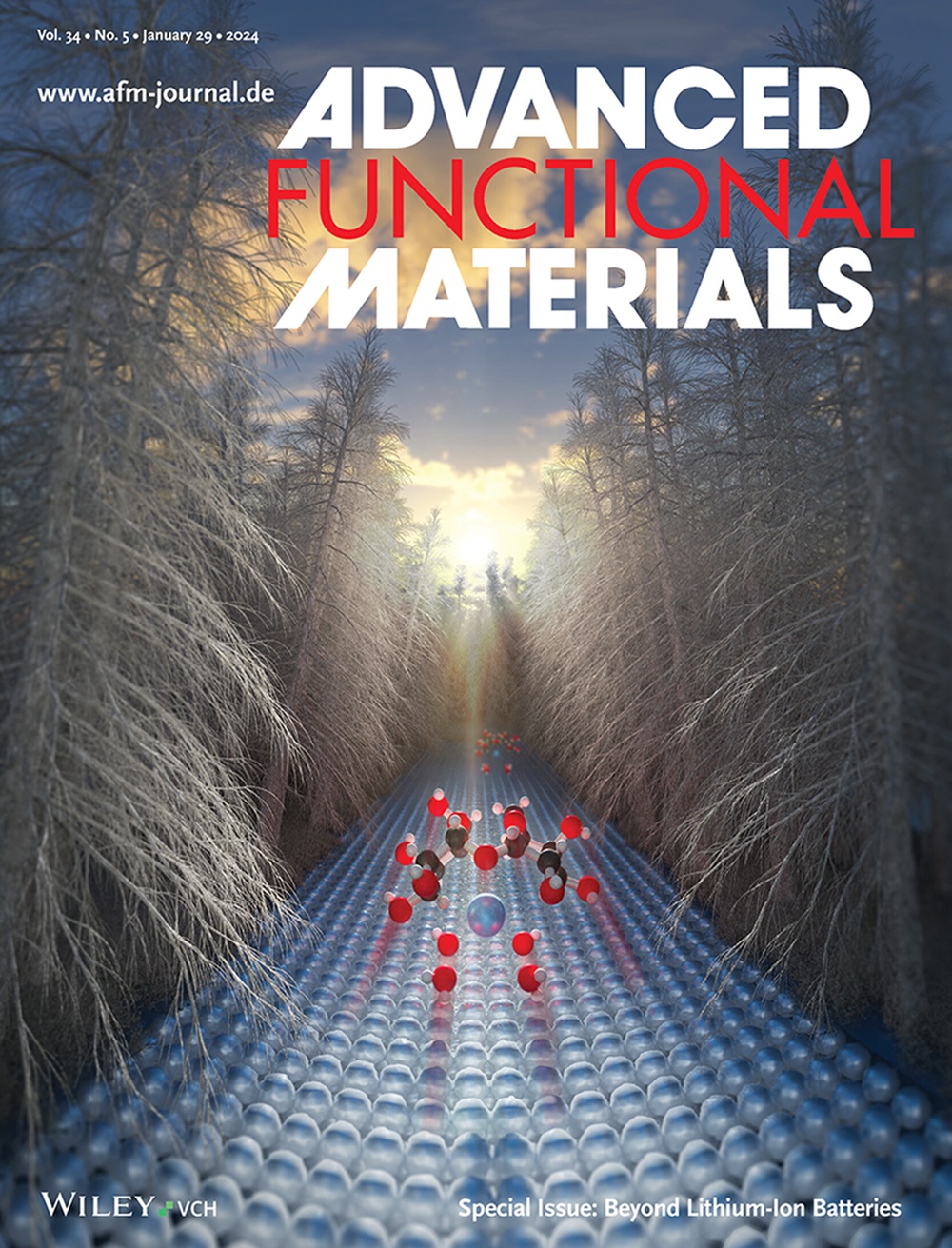A Platelet-Substitute-Releasing Supramolecular Material for Cellular Assembly Mediated On-Demand Hemostasis
IF 18.5
1区 材料科学
Q1 CHEMISTRY, MULTIDISCIPLINARY
引用次数: 0
Abstract
Inspired by the critical role of platelets in hemostasis, hemostatic agents aim to enable rapid blood clotting, essential for saving lives in severe hemorrhages. Traditional hemostatic methods often rely on the slow binding of limited cellular components and proteins rendering them inadequate for critical scenarios. In this study, macroscopic supramolecular hemostatic materials capable of moisture-triggered release of nanosized glycan-based platelet substitutes (PS) are developed to facilitate expedited hemostasis. The inherent supramolecular chemistry of these glycan-based PS modified with catechol and alkyl enables instant amalgamation with red blood cells and albumin, forming a durable blood gel that exhibits self-healing and anti-adhesion properties, effectively minimizing rebleeding and postoperative complications. Meanwhile, the PS Pad instantly adheres to various organs and resists arterial blood pressure by constructing a microstructure-adapting PS layer on the tissue surface. In rodent and porcine trauma models of liver and femoral arteries with coagulation disorders, the PS-releasing hemostat stops bleeding within 45 s and is easily detached without rebleeding after use. The integration of fast-acting supramolecular interactions, biocompatibility, and self-healing characteristics positions these materials as promising candidates for rapid hemostatic solutions and potential translational applications in managing severe traumatic bleeding.

求助全文
约1分钟内获得全文
求助全文
来源期刊

Advanced Functional Materials
工程技术-材料科学:综合
CiteScore
29.50
自引率
4.20%
发文量
2086
审稿时长
2.1 months
期刊介绍:
Firmly established as a top-tier materials science journal, Advanced Functional Materials reports breakthrough research in all aspects of materials science, including nanotechnology, chemistry, physics, and biology every week.
Advanced Functional Materials is known for its rapid and fair peer review, quality content, and high impact, making it the first choice of the international materials science community.
 求助内容:
求助内容: 应助结果提醒方式:
应助结果提醒方式:


